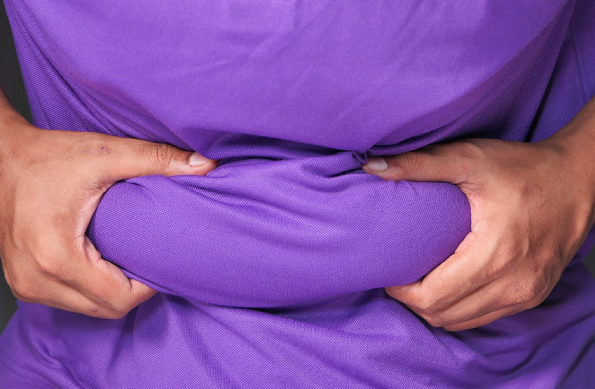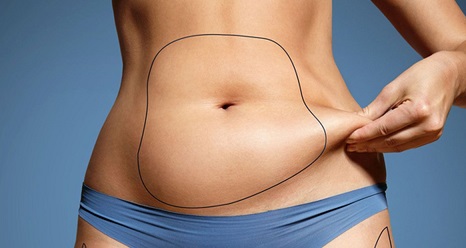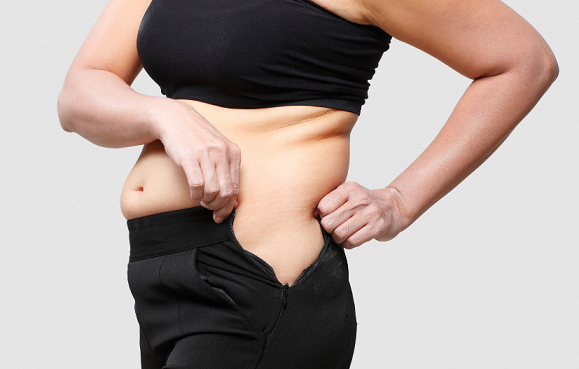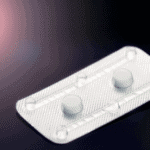
Getting rid of belly fat after hysterectomy can be a daunting task. So, if you just recently had a hysterectomy and are worried about the fat around your belly, you are not alone.
A hysterectomy is a common surgery done by women nowadays. However, 90% of all hysterectomies are not life-threatening and are unnecessary. Hysterectomy is the second most common surgery behind Caesarean sections.
Among the many reasons for performing this procedure is the fact that it may be a last resort treatment for conditions like endometriosis or uterine fibroids or a permanent birth control method for women.
It is not unusual for women who get a hysterectomy to gain a few kilograms of belly fat. Medical research reveals that there is a direct link between hysterectomy and weight gain.
The type and purpose of the hysterectomy performed can affect overall body weight and significant fat accumulation.

A hysterectomy is a surgical procedure to remove all or parts of the uterus (womb) and possibly the cervix and surrounding organs and tissues like the ovaries and fallopian tube.
The procedure is usually done to treat certain medical conditions that affect the uterus or other surrounding organs like the cervix, fallopian tube, and ovaries.
However, the uterus (womb) is the main focus of hysterectomy surgery. After a hysterectomy, a woman will not be able to get pregnant or see her period.

As mentioned earlier, women undergo hysterectomies for different reasons, such as:
There are side effects associated with having a hysterectomy:

Belly fat or weight gain can occur after a hysterectomy, which isn’t necessarily attributed to any significant changes in lifestyle, habits, physical activities, or diet.
The belly swells after a hysterectomy, and it can easily be mistaken for belly fat. Additionally, other organs in the abdomen or pelvis tend to swell after this procedure, which gives the stomach a sagging appearance. The swelling of the pelvic and internal lower abdominal structures can take several months to resolve after a hysterectomy.
An abdominal hysterectomy can be a catalyst for anatomical and muscular changes in the body, especially in the lower abdominal region.
Certain ligaments and muscles keep the uterus in place, maintain pressure in the internal abdominal area, and stabilize the midsection. The incisions from a hysterectomy can sever these muscles, weaken them, or make them stop working.
This makes the belly protrude or look floppy, and it also makes the midsection appear shortened and thick. Some people may have rolls of fat in the abdominal area and a saggy stomach.
One of the major causes of belly fat after hysterectomy is reproductive hormonal changes. When the uterus is removed, there are changes in hormone production.
Also, if you had your ovaries removed during the procedure, there would be changes in hormone production, which would lead to what is called “surgical menopause.” During menopause, estrogen is secreted in small amounts, resulting in a reduction in estrogen production.
The ovaries secrete estrogen hormones, and when they are removed, there is an absence or reduction in the production of estrogen, which would cause you to experience menopausal symptoms.

Essentially, there is a direct link between hysterectomy and increased weight gain. However, fat accumulation and weight gain are entirely individual, and so, not every woman may be affected. Certain factors affect weight gain after a hysterectomy which include:
Some types of hysterectomy impact weight gain more than others. For example, a hysterectomy that involves removing the ovaries leads to a reduction in estrogen levels, which triggers weight gain. The sudden hormone change, which leads to surgical menopause increases overall body and belly fat.
If you were overweight before a hysterectomy or have gained and lost weight repeatedly, you stand a high risk of adding more pounds after a hysterectomy.
The more weight you have before the procedure, the more likely you are to gain weight after the procedure.
Additionally, overweight women are at risk of having conditions that require a hysterectomy.
The time it takes to recover from a hysterectomy is extensive. Usually, it takes up to 4-6 weeks to recover and resume normal physical activities.
However, the recovery rate is different for every person. Women who perform abdominal hysterectomy require a longer time to heal and may add more weight afterwards.
To fully recover, it is necessary to be physically inactive to help the body heal. This physical inactivity requires staying in one place for a long time, and this leads to weight gain.
After a hysterectomy, you may not have the luxury of exercising immediately due to the discomfort and pain that come with the procedure.
The longer the time to heal, the more physical inactivity affects your weight. Staying physically inactive so you can heal after the procedure can increase the risk of accumulating fat, and ultimately gaining weight.
READ ALSO:
7 detox smoothie recipes to lose belly fat
Easy and effective exercises to burn belly fat quickly
Best exercises to perform at home without equipment
Generally, there are two major ways of reducing belly fat after hysterectomy: abdominal exercises and nutrition.
Engaging in regular exercise for 150 minutes weekly or 75 minutes for aerobic exercises is essential for you to reduce the belly fat after hysterectomy.
Before performing any exercise of any kind, ensure you speak with a certified doctor or your surgeon and get approval to do so. The minute you get the go-ahead, you can begin with little walks or other little movements with low impact.
When you are fully recovered and have regained your strength, you can develop an exercise plan that focuses on burning fat and building muscles, which includes:
These exercises will tone and flatten the appearance of the belly and protect the pelvic floor. It is important to incorporate activities you really enjoy into your daily routine and exercise. It can very well set the pace for a long-term and sustainable exercise.
One of the best ways to reduce belly fat after hysterectomy is through diet and nutrition. Nutrition cannot reverse or change anatomical modifications from a hysterectomy but can positively affect hormones and reduce belly fat significantly.
To reduce belly fat after hysterectomy, remember when planning your diet, eliminate calories and include ingredients such as:
Vegetables’ antioxidant components prevent inflammation in the body. They are also good sources of fibre, which is good for the gut. Most vegetables are low in fat and calories, thereby creating a calorie deficit, which is important for weight loss. This makes them a perfect choice for reducing belly fat and weight loss.
Fruits have a lot of water and fibre content, which adds volume to your meals and prevents you from eating too much or fewer calories. Fruits are very low in calories and high in nutrients, so naturally, they will prevent weight gain and chronic conditions like cardiovascular diseases. Fruits are a natural way to lose weight and can be consumed raw or as smoothies.
Whole grains have a lot of fibre and fibre decreases the digestion rate in the body. Whole grains stimulate calorie loss by decreasing the number of calories stored during digestion. It will make you feel full longer and prevent you from overeating.
Picking whole grains over refined grains reduces belly fat and also lowers your chances of becoming overweight. Whole grains like brown rice, whole wheat, corn, popcorn, whole oats, whole rye, buckwheat, and wild rye will help you shed weight and belly fat after a hysterectomy.
Beans are high in protein and stimulate weight loss by burning calories and fat. Beans are low in fat and glycemic index and are also a great source of fibre. Using beans as a major source of protein prevents fat accumulation in the belly.
Telemedicine provides you with medical services that will assist you in many ways, including maintaining healthy lifestyles, losing belly fat after hysterectomy, and medical intervention for illnesses. Before you get a hysterectomy, get a second opinion from other medical experts through this link.
You can get medical services from the comfort of your home or office through a telecommunication device. Whatever you discuss with the healthcare professional is kept confidential.
Belly fat is a common post-hysterectomy challenge, and some factors responsible for belly fat after hysterectomy include hormonal changes, damaged or weakened muscles and ligaments, and abdominal swelling.
Developing belly fat after hysterectomy occurs without any significant lifestyle change. However, after a hysterectomy, you can modify your lifestyle and diet to efficiently trigger weight loss and burn the belly fat that comes with the procedure.
Perform light exercises and also consult with an expert doctor for supervised guidance on ways to lose belly fat after hysterectomy without disrupting your healing process.
1. How to lose belly fat after hysterectomy fast?
After a hysterectomy, creating an energy deficit is the most effective strategy to lose weight and belly fat after hysterectomy. You must use more energy than you take in in order to have an energy deficit. You can create an energy deficit by changing your diet to consume less calories or energy.
2. How do I tighten my stomach after a hysterectomy?
Starting with isometric abdominal workouts is an excellent idea. Try out these activities: with your feet flat on the floor, hands akimbo, and back arched, sit on an exercise ball. Next, engage your rectus muscles, which are located in your stomach, and gently curl your shoulders toward your pelvis.
3. What vitamins to take after a hysterectomy?
The following nutrients are commonly included in post-surgery recovery because of their numerous health benefits:
4. How to reduce belly fat in 7 days?
You can use methods like running for 25 minutes a day and eating a balanced diet to lose abdominal fat in just one week. The body will burn fat more readily on a diet low in calories, fats, and carbohydrates.
5. How long does it take for your stomach to flatten after a hysterectomy?
A hysterectomy will cause your stomach to swell for a few weeks. After the healing phase, you can see a decrease in stomach bloating and swelling, depending on the reason behind your hysterectomy.
6. Does shapewear help after hysterectomy?
After a hysterectomy, using an abdominal binder may be helpful in relieving pain by holding your abdominal muscles together. Boost circulation at the surgery site to aid in recovery and reduce edema, enhance the comfort of physical activities.
References
Moorman, Patricia & Schildkraut, Joellen & Iversen, Edwin & Myers, Evan & Gradison, Margaret & Warren, Nicolette & Wang, Frances. (2009). A Prospective Study of Weight Gain after Premenopausal Hysterectomy. Journal of women’s health (2002). 18. 699-708. 10.1089/jwh.2008.1019.
Hysterectomy and Weight Gain: Are They Linked?
Nava Health https://navacenter.com › Blog
Can I Get A Flat Stomach After A Hysterectomy?
Gym Pact
Hysterectomy: Purpose, Procedure, Benefits, Risks & …
Cleveland Clinic
What to Expect With Weight Gain After Hysterectomy
How to Lose Weight After Your Hysterectomy
BodyLogicMD
https://www.bodylogicmd.com › blog › how-to-lose-…
healthcareNovember 7, 2024
MedicationNovember 25, 2024
NutritionFebruary 5, 2025
MedicationFebruary 5, 2025








